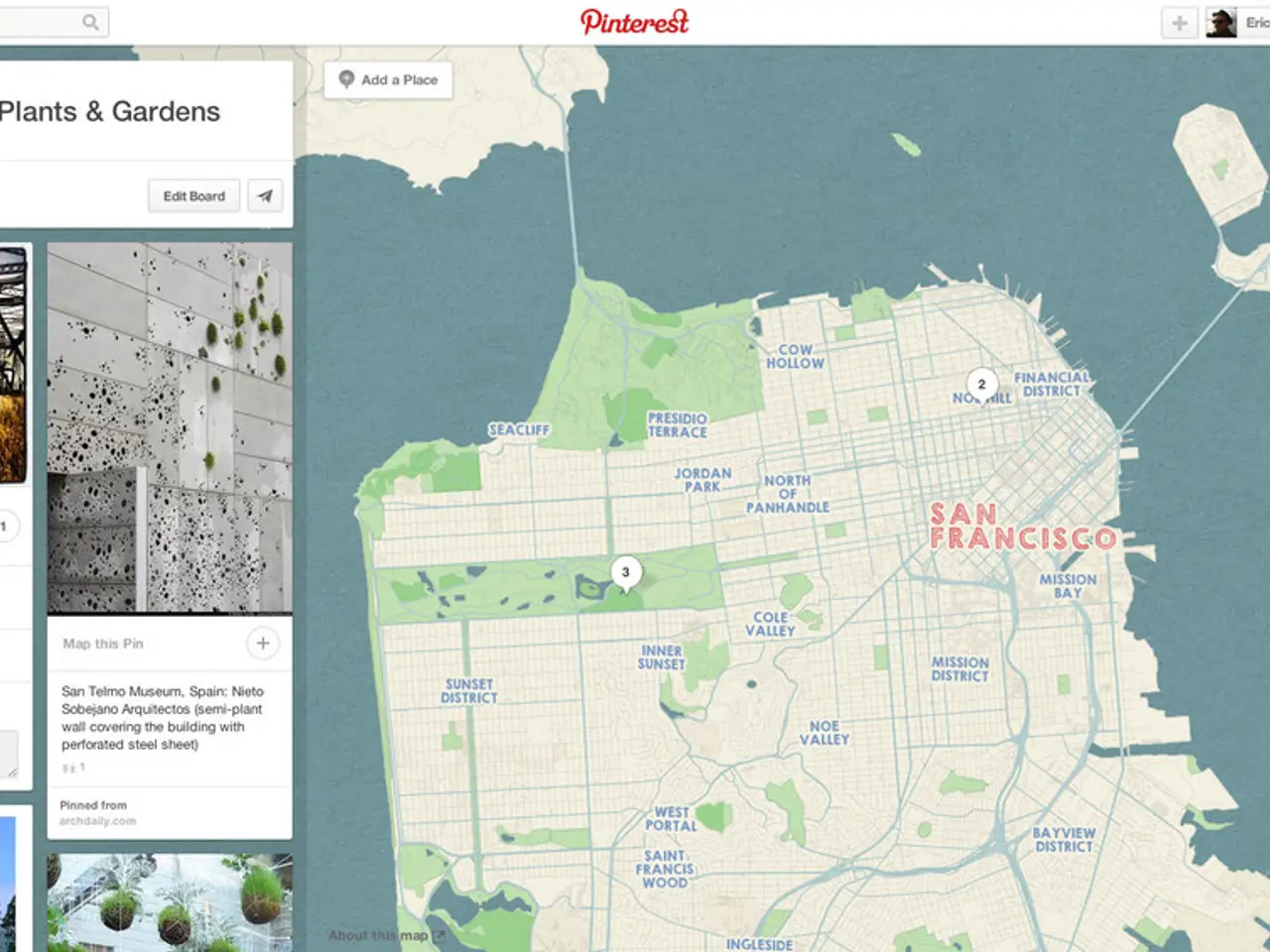Ancient, Valuable Map places China at the Heart of Global Configuration, Valued at a Million Dollars
In the year 1602, under the commission of the Wanli Emperor of the Ming dynasty, a groundbreaking map was created - the Kunyu Wanguo Quantu. This map, often referred to as the "Impossible Black Tulip of Cartography," played a significant role in commerce and global trade, and remains a testament to the cultural exchange between Europe and China.
The map was a collaboration between Italian Jesuit missionary Matteo Ricci and Chinese scholar Li Zhizao. Ricci, a skilled mathematician and cartographer, partnered with Chinese scholars such as Xu Guangqi to produce the map. The map was printed on six panels of fine mulberry paper and was designed to be mounted on a folding screen, a format befitting imperial presentation.
Ricci's strategy was to centre the map on the Pacific Ocean instead of Europe, a clever move that flattered the Chinese sense of centrality in the world. This made the new geographic knowledge more acceptable to the Chinese elite and imperial court. The map was over 12 feet wide and was the first to show the Americas to the Chinese people.
The Kunyu Wanguo Quantu was popular, with estimates suggesting over 1,000 copies were made. However, no known copies survive in China, and only a few survive to this day, including one owned by the Vatican and several universities in Japan. One of the best-preserved original copies was purchased by the James Ford Bell Trust in 2009 for $1 million.
Matteo Ricci used the map as part of his strategy to convert the Chinese to Roman Catholicism. The map popularized the term Dàxīyáng (大西洋), or "Great Western Ocean," as the Chinese name for the Atlantic. It showed detailed annotations, including the labeling of Canada, Florida, Guatemala, Yucatan, Chile, and Bolivia's Potosi silver mines.
The map represented a key moment of cross-cultural knowledge exchange. It facilitated the modernization of Chinese geographical knowledge without directly confronting Chinese cultural pride, thereby impacting China's understanding of the broader world, international commerce, and the emerging geopolitical realities of the 17th century. The map served as a cultural and scientific bridge between Europe and China, fostering intellectual exchange and opening the Ming court and scholarly elite to Western scientific knowledge.
In conclusion, the Kunyu Wanguo Quantu symbolized a pivotal moment in history. It introduced a European-style world map into China that placed the Ming Empire at the centre, respecting Chinese cultural views while bringing a radically new global geographic perspective. This collaboration helped shift Chinese understanding of the world beyond its traditional Sino-centric view, enhancing awareness of global geography, which had implications for commerce and geopolitics.
- The Kunyu Wanguo Quantu, a map created in 1602, marked a significant breakthrough in the realm of science and technology, bridging the gap between Europe and China.
- Matteo Ricci, an Italian Jesuit missionary, leveraged the map to foster intellectual exchange, promoting Western scientific knowledge and influencing the Ming court and scholarly elite.
- The map, which was designed to be mounted on a folding screen, intriguingly centered the Pacific Ocean instead of Europe, making new geographic knowledge more palatable to the Chinese elite and imperial court.
- Ricci's strategy, which involved popularizing Western terms such as "Great Western Ocean" for the Atlantic, contributed to the evolution of Chinese vocabulary, reflecting the influence of technology and science on education-and-self-development.
- The Kunyu Wanguo Quantu's detail annotations, including the labeling of various countries and natural resources, further underscore the map's impact on the diffusion of knowledge across cultures.
- The map's survival today, despite its popularity and wide dissemination, serves as a reminder of the enduring value of research and exploration in the field of astronomy and space.




